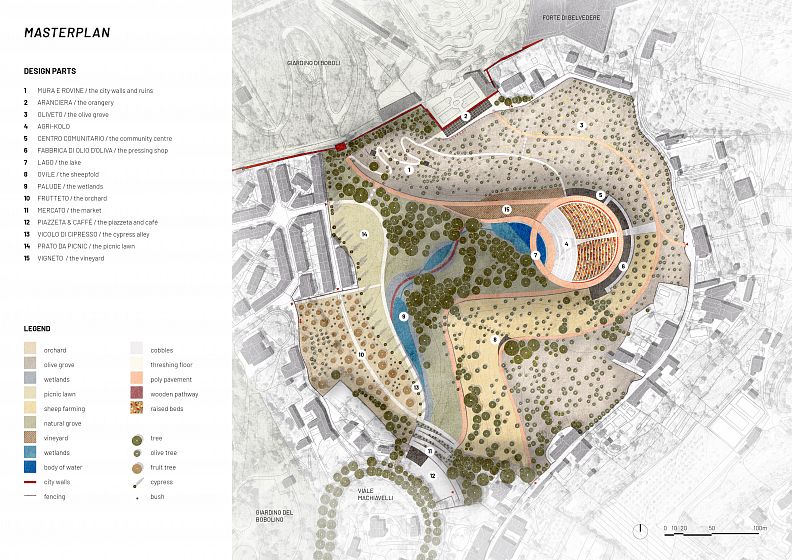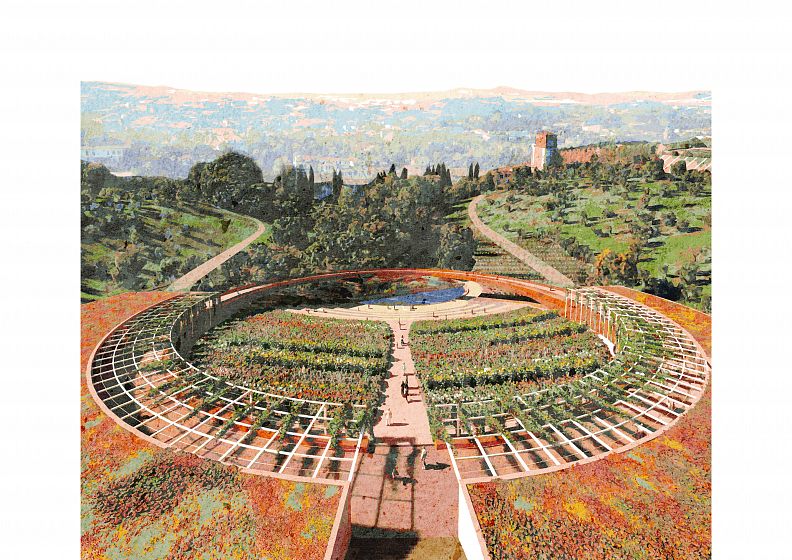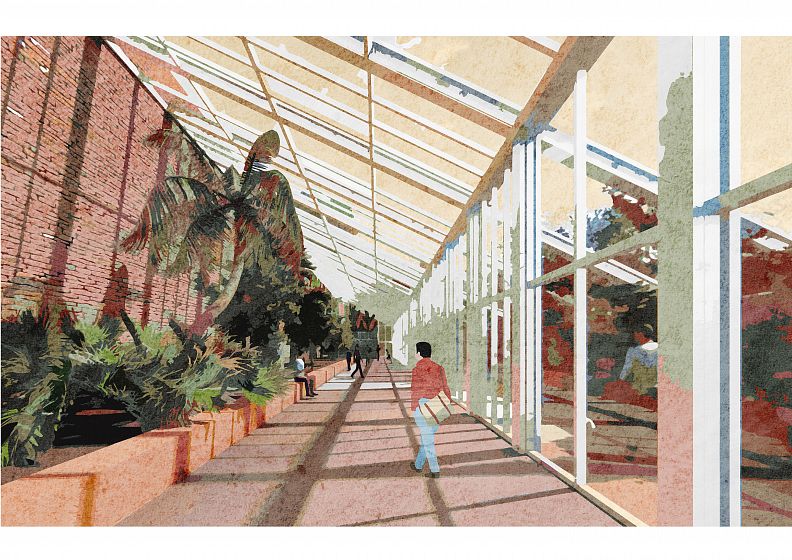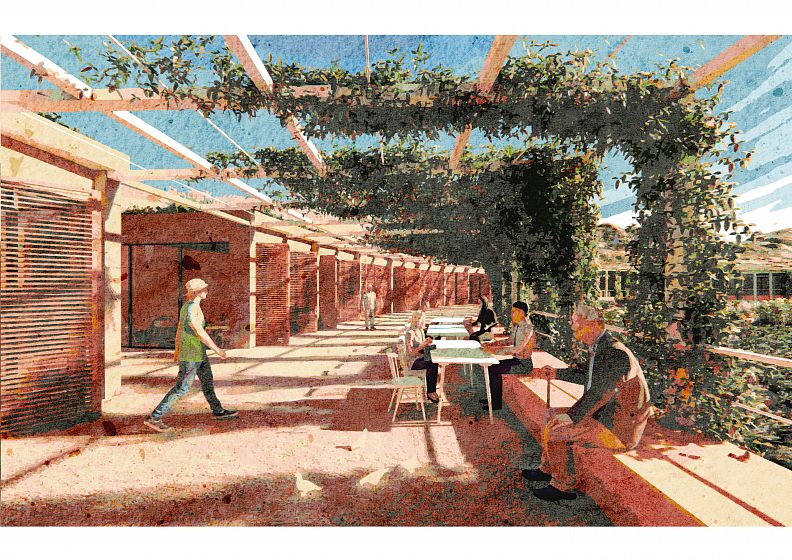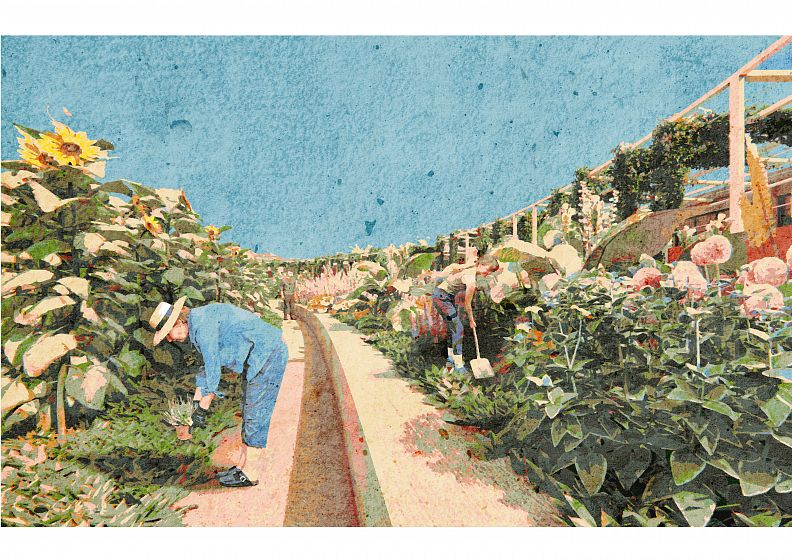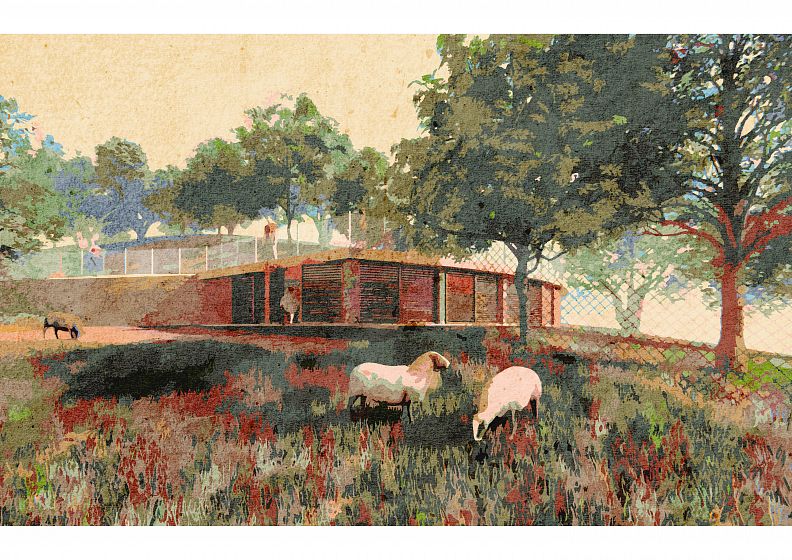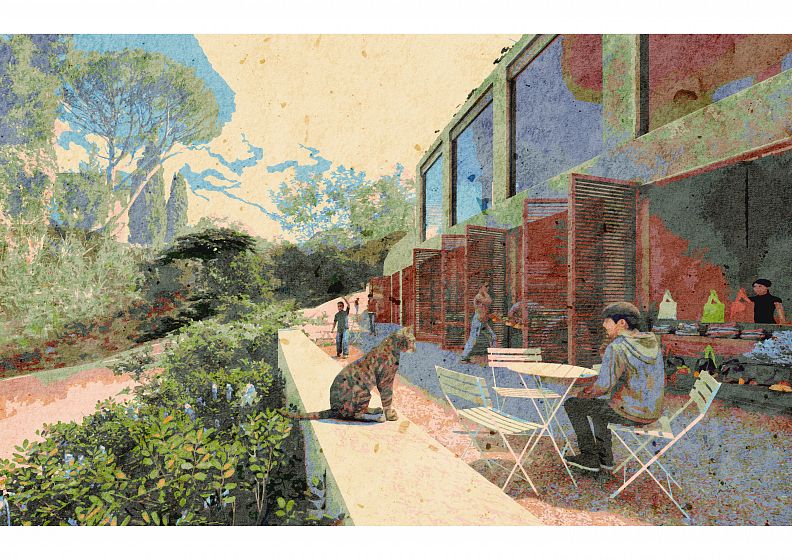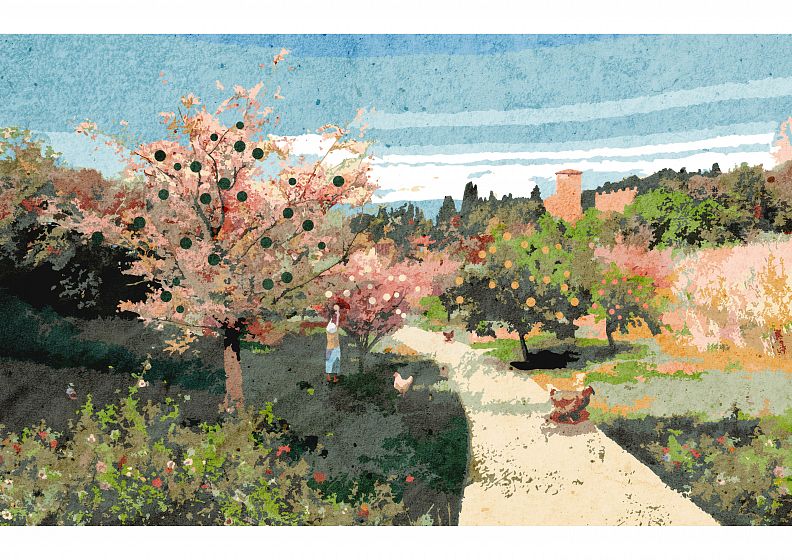Parco Agri-kolo

Project idea
There are only small fragments of green spaces in Florence, that are open to the public. The creation of new green spaces is very important mainly because of climate changes. The concept is based on four starting points. First one is the fact of existing city walls, that are last remains of fortification in Florence, so they make a basic element in design. Secondly, the olive grove, the symbol of tuscan landscape as remain of traditional life. Third point is to make area permeable and create the reason why visit my park. Last but not least is drought solution and creation of pleasant urban microclimate.
Project description
The park combines recreational and utility function and creates edible public space. Through the park, there is a promenade that connects the central places of the park.
The visitor walks alongside the city walls to the orangery. He gets lost in an olive grove, meets his friends in a central area called Agri-kolo. He has a break in the amphitheater surrounded by the scent of Italian herbs. He cools down in the shade of an overgrown forest with a wetland. He walks alongside a cypress tree line. He plucks an apple in an orchard and he ascends the terraces to the square with a view of the entire park.
Technical information
Agri-kolo forms a heart of whole park - the central space. There is an amphitheater with stepped seating, which serves as an auditorium for a summer cinema. The amphitheater graduates into vegetable beds with italian crops, that creates irregular mosaic.
Around the terraces, there is a circular promenade, which grows from terrain into bridge. Part of promenade is covered by steel contruction overgrown with climbing plants, that make the space a pleasant and shady place to meet and sit. Around the promenade are buildings of community centre, bistro and pressing shop. The buildings are partly under the ground and merge with the surrounding olive grove.

